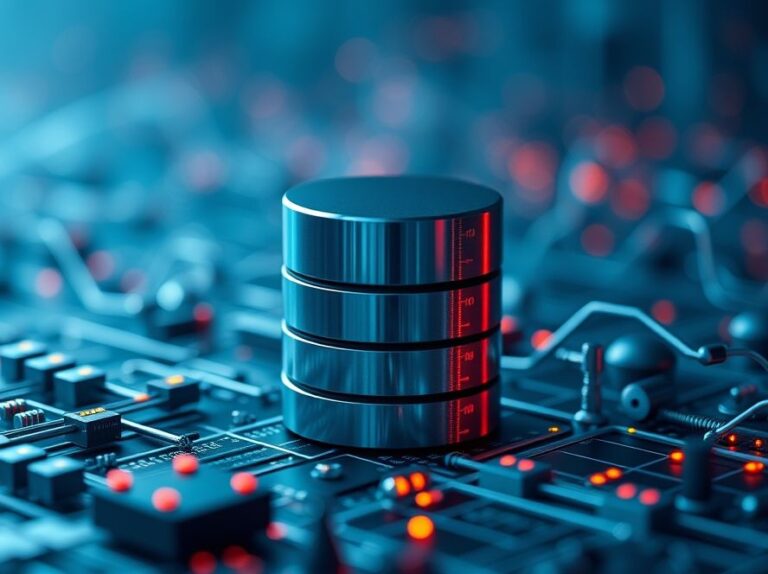What is Network Monitoring?
Network Monitoring refers to the process of continuously observing a computer network for any changes, performance issues, or security threats. In simpler terms, it’s like having a security camera for your network, ensuring everything operates smoothly and securely. With the rapid advancement of technology, especially in cyber security powered by artificial intelligence (AI), effective network monitoring has become crucial.
Why is Network Monitoring Important?
In today’s digital landscape, the importance of network monitoring cannot be overstated. Businesses rely heavily on their networks for daily operations, communication, and data management. Here are several key reasons why network monitoring is essential:
- Performance Optimization: By monitoring network traffic and analyzing data flow, organizations can identify bottlenecks and optimize performance.
- Security Threat Detection: Network monitoring tools help detect unusual activities that may indicate security breaches or cyber-attacks.
- Downtime Prevention: Continuous monitoring allows IT teams to address issues before they escalate, minimizing downtime and maintaining productivity.
- Compliance and Reporting: Many industries have regulatory requirements that necessitate monitoring and reporting on network activity.
How Does Network Monitoring Work?
Understanding how network monitoring works involves knowing the components and tools used in the process. Here’s a breakdown of the key elements:
- Network Monitoring Tools: These are software applications designed to track, analyze, and report on network activity. Popular examples include SolarWinds, PRTG Network Monitor, and Nagios.
- Data Collection: Tools collect data from various network devices, including routers, switches, and servers. This data can include bandwidth usage, latency, and error rates.
- Data Analysis: The collected data is analyzed to identify trends, performance issues, or potential security threats. AI algorithms can enhance this analysis by predicting future network behavior.
- Alerts and Notifications: When the monitoring tools detect anomalies or performance issues, they send alerts to IT teams for immediate action.
Practical Applications of Network Monitoring
Network monitoring isn’t just a theoretical concept; it has real-world applications that can significantly impact business operations. Here are a few practical examples:
- Enterprise Networks: Large corporations utilize network monitoring to manage extensive networks, ensuring optimal performance and security.
- Cloud Services: As companies migrate to cloud-based solutions, monitoring these networks helps maintain service quality and data integrity.
- Remote Work: With the increase in remote work, organizations are employing network monitoring to secure remote connections and ensure employees have reliable access to resources.
- IoT Devices: As the Internet of Things (IoT) expands, monitoring these devices within the network is critical to prevent vulnerabilities and ensure reliable communication.
Related Concepts
Network monitoring is closely related to several other concepts in cybersecurity and network management:
- Network Security: While network monitoring focuses on observing network activity, network security involves protecting the network from threats.
- Intrusion Detection Systems (IDS): IDS are tools that monitor network traffic for suspicious activity, complementing network monitoring efforts.
- Network Performance Management (NPM): NPM focuses specifically on monitoring and optimizing network performance.
- Incident Response: In case a security threat is detected, effective network monitoring can aid in incident response, helping teams mitigate damage.
How to Implement Network Monitoring in Daily Operations
Implementing network monitoring in your organization can be straightforward if you follow these steps:
- Assess Your Needs: Determine the scale of your network and the specific aspects you need to monitor.
- Select Appropriate Tools: Choose network monitoring tools that fit your requirements. Consider features such as real-time monitoring, alert systems, and reporting capabilities.
- Set Up Monitoring Parameters: Define what metrics you want to track, such as bandwidth usage, device uptime, and error rates.
- Regular Review and Adjustments: Regularly review monitoring reports and adjust your monitoring parameters as necessary to align with changing network needs.
Conclusion
In conclusion, network monitoring is a vital component of modern cybersecurity, especially in the context of AI. It not only helps maintain the performance and security of networks but also provides invaluable insights for future improvements. Whether you are a seasoned professional or just starting in the field, understanding the intricacies of network monitoring will empower you to safeguard your organization’s digital assets effectively.
As you reflect on this information, consider how you can implement network monitoring practices within your organization to enhance security and performance. Embrace the tools available, and stay proactive in your approach to network management.









